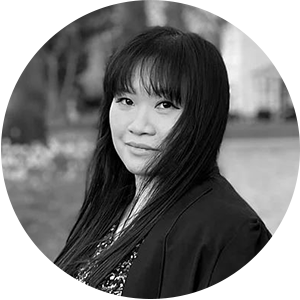Amid the evolving challenges in the higher education sector, prioritizing the well-being of educators has become crucial, not only for their own productivity and job satisfaction but also for fostering a supportive learning environment for students. With institutions navigating post-pandemic realities, the correlation between educator well-being and student outcomes is more evident than ever.
We focus on student mental health. But what about educator well-being?
UK-based educator and student May Ho explores practical steps higher ed can take to maintain faculty well-being and how these efforts can positively impact student experiences.

What is well-being?
UK professional bodies, including the Chartered Institute of Personnel and Development (CIPD) and Chartered Management Institute (CMI), define workplace well-being as “environments that support employees’ physical health and safety and mental health, which may enable employees to thrive.’
However, well-being remains a complex term, with definitions varying across institutions. Researchers, including Douwes, argue that well-being consists of varied aspects, including emotional, psychological and social, which makes defining a universal well-being terminology challenging. To simplify, I adopted the World Health Organization‘s (WHO) definition: a “state” where individuals can realize their potential, manage everyday stresses, and contribute effectively to their communities.
Why should the well-being of educators be prioritized?
Despite growing awareness of mental and physical health during and after the pandemic, UK universities, as well as American ones still face challenges. “Presenteeism,” when employees work when unwell, and “leaveism,” a phenomenon in which employees use holiday entitlement for sick leave or to work, remain high across all sectors, including higher ed.
The CIPD argued that unhealthy workplaces commonly exist in the UK and implies that higher ed employers need to do more in-depth analyses to understand varied factors at work, such as workload. As a result, the focus on defining well-being has overshadowed the need for consistent sector-wide standards. A holistic well-being framework is needed to address core issues like workloads and create supportive work environments for educators.
What may an educator need?
Based on my experience, higher ed educators juggle multiple roles. Course director, lecturer, assessor, academic integrity officer, internal moderator, researcher, external examiner, academic contact, attendance register administrator and networker were just some official ‘job titles’ I had as part of my career. In some situations, I was a coach, mentor and advisor for students, guiding them through the issues they faced before referring them to relevant university professional teams, such as career services.
With such a wide range of roles, I felt that I needed to be more competent to remain competitive. I found myself saying ‘Yes!’ to everything. However, managing deadlines, fluctuating energy levels, unpredictable workloads and emotional stress has been challenging, and balancing these responsibilities often leads to stress and burnout. While training and counseling services can be helpful, they may not address the root causes, such as excessive workloads or a lack of systemic support.
Coworkers often suggest taking holidays, but I – like so many others – tend to regret doing so a few days before my leave starts. Workloads increase before time off, requiring me to finish tasks, write handover messages and continue teaching or conducting research unless coverage is arranged. After my leave, tasks pile up, requiring extra effort to catch up on projects, as well as organizational and social changes.
Instead of increasing vacation hours alone, I would suggest a ‘whole-system approach’ that balances sector-wide skills and competencies, time and effort for tasks, organizational and individual needs and personal career goals. This could include better workload management, access to relevant training, and tools like AI to streamline tasks. Institutions should aim for a balanced perspective rather than focusing solely on updating ‘institution-based structures’ to support faculty and staff.
What may a student need?
As a mature, part-time student at Oxbridge, one-on-one access to higher ed leaders and faculty kept me intellectually challenged and engaged with my research, suggesting that educator well-being can enhance education quality. By building support networks with coursemates, college friends and committee members, I created micro-communities and improved my sense of belonging, reducing feelings of isolation.
Next steps for practical implementation
Here are some strategies that have helped me maintain balance as a higher ed educator and as a student.
- Clarify Your Purpose: Use it as a north star to guide and motivate you.
- Identify Your Needs and Wants: Focus on what’s most important and prioritize accordingly.
- Utilize Technology: Leverage tools like AI to automate routine tasks.
- Practice Mindfulness: Find techniques that work for you to manage stress.
- Use the Pomodoro Technique: Improve focus and time management.
By fostering a culture that prioritizes the well-being of educators, institutions can create a more supportive and effective learning environment. This holistic approach not only benefits faculty and staff but also enriches the educational experiences of students, paving the way for a thriving academic community.
Newsletter Sign up!
Stay current in digital strategy, brand amplification, design thinking and more.



